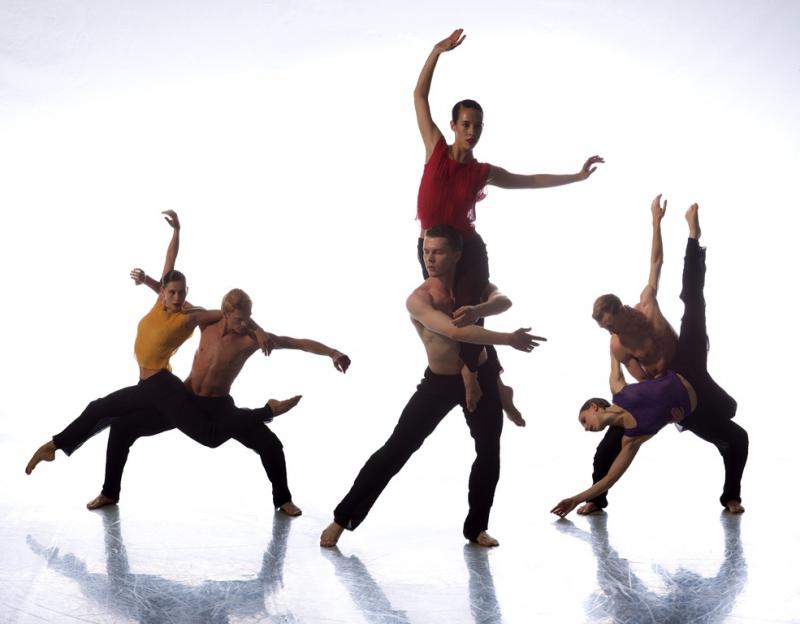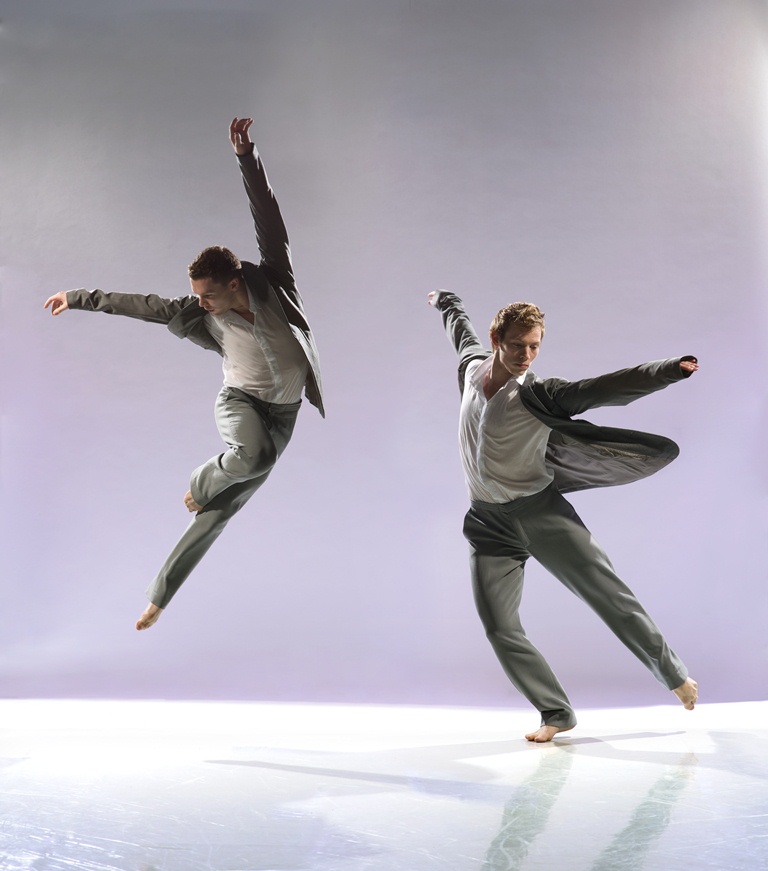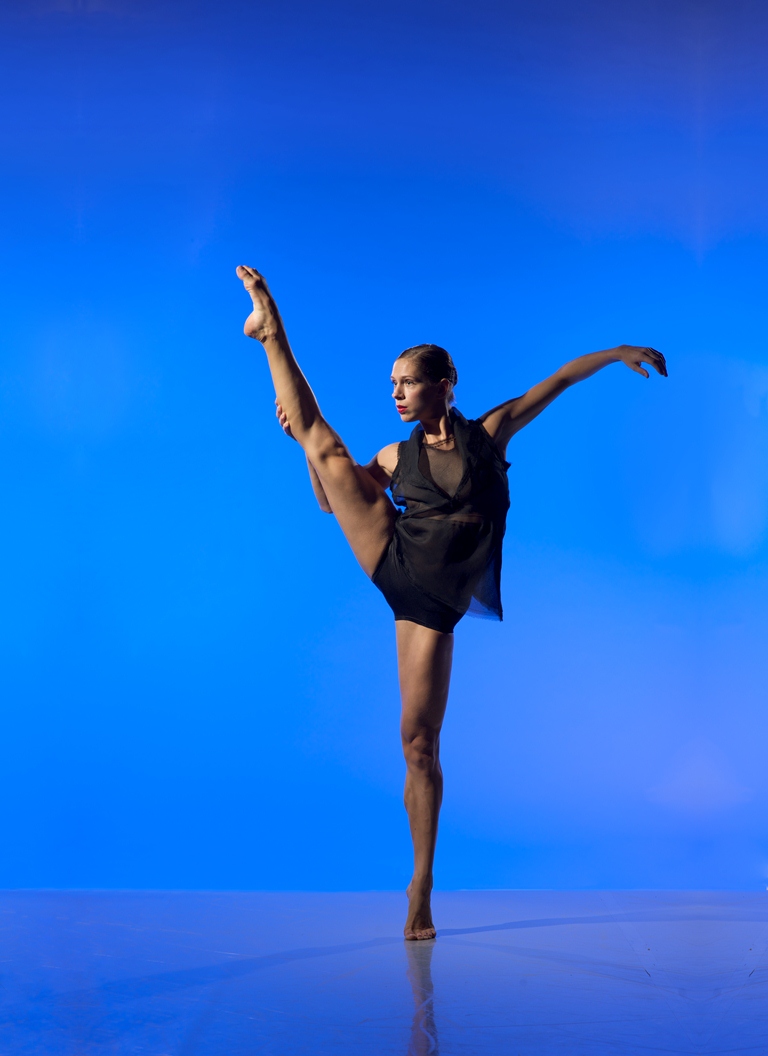Nederlands Dans Theater 2, Sadler’s Wells | reviews, news & interviews
Nederlands Dans Theater 2, Sadler’s Wells
Nederlands Dans Theater 2, Sadler’s Wells
The venerable dance theatre's junior dancers deliver

NDT2 is a fascinating beast. The “junior” company of the venerable Nederlands Dans Theater, it features dancers on the cusp of maturity, aged generally between sixteen and their mid-twenties. Here, in choreography created especially for them, one can watch talent develop. And since the grown-up NDT-ers are known as some of the most exhilaratingly talented dancers in Europe, that is something very special.
After a rather choppy decade with several artistic directors coming and going, NDT itself now has the British-born and -trained choreographer Paul Lightfoot at its helm. For NDT2, with Passe-Partout, he and his choreographic partner Sol León have produced one of their emotionally taut, stylishly detailed pieces of Euro-noir. A passe-partout is a master-key, one which unlocks any door, and there are doors aplenty here, a series of shifting, moving openings, that raise and lower, reorient themselves across the stage, always offering a tantalising promise, but leading, it would seem, to nothing.
 The piece opens with a woman, at first apparently primly clad in a long black dress that hobbles her steps, high-neck that imprisons her head. But it takes just a few dramatic gestures of her arms to see that her midriff is covered with black gauze, and any movement at all leaves her breasts exposed. While her body is half-enswathed, half-displayed, her face, most often, is turned resolutely away, away from us, and from the three men (all splendidly danced, especially the sinuously sinister Marne van Opstal) and two women who mysteriously appear and disappear. This is, it would appear, Ibsen's Nora in A Doll’s House transported via Magritte to some even more rigid society, Spain perhaps. Lightfoot/León traditionally produce not only choreography, but also set and costumes (the excellent lighting is by Tom Bevoort): that this is a satisfyingly, creepily coherent whole is the result.
The piece opens with a woman, at first apparently primly clad in a long black dress that hobbles her steps, high-neck that imprisons her head. But it takes just a few dramatic gestures of her arms to see that her midriff is covered with black gauze, and any movement at all leaves her breasts exposed. While her body is half-enswathed, half-displayed, her face, most often, is turned resolutely away, away from us, and from the three men (all splendidly danced, especially the sinuously sinister Marne van Opstal) and two women who mysteriously appear and disappear. This is, it would appear, Ibsen's Nora in A Doll’s House transported via Magritte to some even more rigid society, Spain perhaps. Lightfoot/León traditionally produce not only choreography, but also set and costumes (the excellent lighting is by Tom Bevoort): that this is a satisfyingly, creepily coherent whole is the result.
 The same cannot be said of the rest of the programme, which suffers in different ways from patchiness veering off into incoherence. Former NDT director Jiři Kylián’s Gods and Dogs is, I think, more or less exploring the line between sanity and madness, but I am only willing to say “I think”: for much of the piece dancers dart on and off, magnified into giant shadows by floor-level spots; in Kylián’s typically rigorous vocabulary, they slide, snap, drop their shoulders, lift their hips into extraordinary – and often extraordinarily beautiful – distortions before they slide off again, each to be replaced by the next, without much connection between any two performers.
The same cannot be said of the rest of the programme, which suffers in different ways from patchiness veering off into incoherence. Former NDT director Jiři Kylián’s Gods and Dogs is, I think, more or less exploring the line between sanity and madness, but I am only willing to say “I think”: for much of the piece dancers dart on and off, magnified into giant shadows by floor-level spots; in Kylián’s typically rigorous vocabulary, they slide, snap, drop their shoulders, lift their hips into extraordinary – and often extraordinarily beautiful – distortions before they slide off again, each to be replaced by the next, without much connection between any two performers.
Everything is busy: the dancers enter and leave, the music (part Beethoven String Quartet no. 1 if F major, part Drik Haubrich’s electronic inventions) dots in and out, raising and lowering the volume, stressing now one instrument, now another. But for what purpose, I cannot say: it is not that Gods and Dogs is not greater than the sum of its parts; it is that I am not sure it even adds up the sum of its parts.
Alexander Ekman, with Cacti, has produced a charmingly goofy finale, which also misfires from time to time, although more understandably, as Ekman is barely older than the dancers onstage. The piece uses the whole company of sixteen dancers, who appear with slightly archaicized gestures as a hieratic troupe that stamp, slap and turn, each on his or her own small platform under spotlights, to a designedly pompous po-mo melange of critical-theory-speak (written by dancer Spenser Theberge), to a mash-up of Haydn’s Seven Last Words of Our Saviour on the Cross, another Beethoven quartet (no. 9 in C), and the Presto from Schubert’s Death and the Maiden, in Mahler’s arrangement (NDT seem to have a fondness for this otherwise fairly obscure transcription: Lightfoot/León’s Subject to Change is to the same piece). Now, call me old-fashioned, but Seven Last Words and Death and the Maiden in a comedy-romp piece?
 Yet Ekman makes it work, mostly. The set design (by Ekman himself), and the company moving their platforms about the stage to create stage-pictures, makes me suspect that Ekman has seen Sidi Larbi Cherkaoui’s Sutra, where the Shaolin monks build cascades of stage-pictures from Antony Gormley’s boxes. Here the effect is not so stylized, but it shows a real sense of theatrical space.
Yet Ekman makes it work, mostly. The set design (by Ekman himself), and the company moving their platforms about the stage to create stage-pictures, makes me suspect that Ekman has seen Sidi Larbi Cherkaoui’s Sutra, where the Shaolin monks build cascades of stage-pictures from Antony Gormley’s boxes. Here the effect is not so stylized, but it shows a real sense of theatrical space.
Choreographically, and theatrically, the most original section is a pas de deux where the two dancers produce a running commentary on their piece: “Jump. Jump. Bitch.” “Please be careful of my head here. Please.” “It’s not always about you.” I look forward very much to seeing where Ekman goes next.
Oh, and why were there cactuses? I have no idea. Really. None.
Watch an extract from Cacti
- Nederlands Dans Theater at Sadler’s Wells, until 9 March, an then on tour: 13 & 14 March: Hall for Cornwall, Truro; 16 &17 March: Wales Millennium Centre, Cardiff; 20 & 21 March: Grand Opera House, Belfast; 23 & 24 March: Festival Theatre, Edinburgh; 27 & 28 March: Alhambra Theatre, Bradford; 30 & 31 March: Royal Concert Hall, Nottingham
Buy
Explore topics
Share this article
The future of Arts Journalism
You can stop theartsdesk.com closing!
We urgently need financing to survive. Our fundraising drive has thus far raised £49,000 but we need to reach £100,000 or we will be forced to close. Please contribute here: https://gofund.me/c3f6033d
And if you can forward this information to anyone who might assist, we’d be grateful.

Subscribe to theartsdesk.com
Thank you for continuing to read our work on theartsdesk.com. For unlimited access to every article in its entirety, including our archive of more than 15,000 pieces, we're asking for £5 per month or £40 per year. We feel it's a very good deal, and hope you do too.
To take a subscription now simply click here.
And if you're looking for that extra gift for a friend or family member, why not treat them to a theartsdesk.com gift subscription?
more Dance
 'We are bowled over!' Thank you for your messages of love and support
Much-appreciated words of commendation from readers and the cultural community
'We are bowled over!' Thank you for your messages of love and support
Much-appreciated words of commendation from readers and the cultural community
 Peaky Blinders: The Redemption of Thomas Shelby, Rambert, Sadler's Wells review - exciting dancing, if you can see it
Six TV series reduced to 100 minutes' dance time doesn't quite compute
Peaky Blinders: The Redemption of Thomas Shelby, Rambert, Sadler's Wells review - exciting dancing, if you can see it
Six TV series reduced to 100 minutes' dance time doesn't quite compute
 Giselle, National Ballet of Japan review - return of a classic, refreshed and impeccably danced
First visit by Miyako Yoshida's company leaves you wanting more
Giselle, National Ballet of Japan review - return of a classic, refreshed and impeccably danced
First visit by Miyako Yoshida's company leaves you wanting more
 Quadrophenia, Sadler's Wells review - missed opportunity to give new stage life to a Who classic
The brilliant cast need a tighter score and a stronger narrative
Quadrophenia, Sadler's Wells review - missed opportunity to give new stage life to a Who classic
The brilliant cast need a tighter score and a stronger narrative
 The Midnight Bell, Sadler's Wells review - a first reprise for one of Matthew Bourne's most compelling shows to date
The after-hours lives of the sad and lonely are drawn with compassion, originality and skill
The Midnight Bell, Sadler's Wells review - a first reprise for one of Matthew Bourne's most compelling shows to date
The after-hours lives of the sad and lonely are drawn with compassion, originality and skill
 Ballet to Broadway: Wheeldon Works, Royal Ballet review - the impressive range and reach of Christopher Wheeldon's craft
The title says it: as dancemaker, as creative magnet, the man clearly works his socks off
Ballet to Broadway: Wheeldon Works, Royal Ballet review - the impressive range and reach of Christopher Wheeldon's craft
The title says it: as dancemaker, as creative magnet, the man clearly works his socks off
 The Forsythe Programme, English National Ballet review - brains, beauty and bravura
Once again the veteran choreographer and maverick William Forsythe raises ENB's game
The Forsythe Programme, English National Ballet review - brains, beauty and bravura
Once again the veteran choreographer and maverick William Forsythe raises ENB's game
 Sad Book, Hackney Empire review - What we feel, what we show, and the many ways we deal with sadness
A book about navigating grief feeds into unusual and compelling dance theatre
Sad Book, Hackney Empire review - What we feel, what we show, and the many ways we deal with sadness
A book about navigating grief feeds into unusual and compelling dance theatre
 Balanchine: Three Signature Works, Royal Ballet review - exuberant, joyful, exhilarating
A triumphant triple bill
Balanchine: Three Signature Works, Royal Ballet review - exuberant, joyful, exhilarating
A triumphant triple bill
 Romeo and Juliet, Royal Ballet review - Shakespeare without the words, with music to die for
Kenneth MacMillan's first and best-loved masterpiece turns 60
Romeo and Juliet, Royal Ballet review - Shakespeare without the words, with music to die for
Kenneth MacMillan's first and best-loved masterpiece turns 60
 Help to give theartsdesk a future!
Support our GoFundMe appeal
Help to give theartsdesk a future!
Support our GoFundMe appeal

Add comment